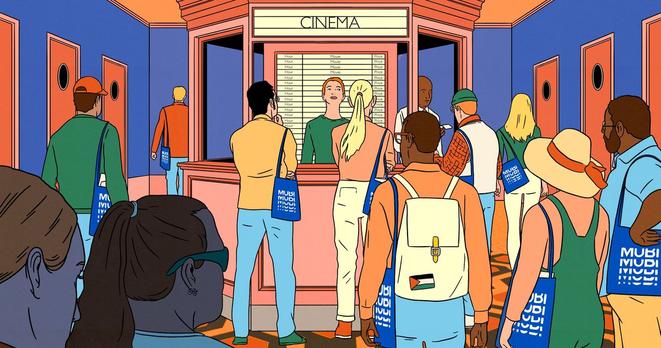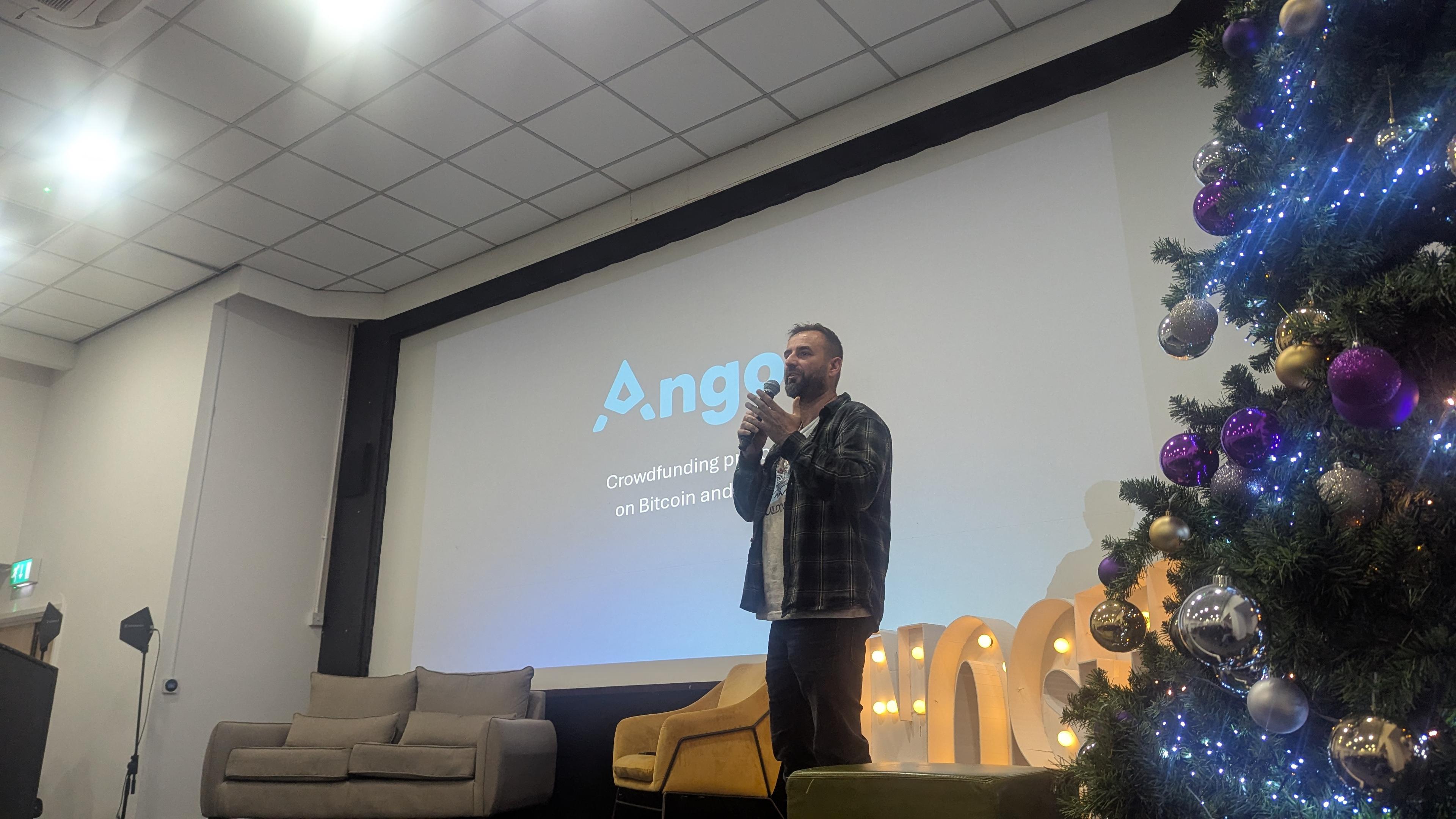2026-01-02 15:30:46
A profile of Mubi, as it deals with backlash including employee dissent and subscriber and partnership cancellations over its investor Sequoia's ties to Israel (Will Tavlin/Vulture)
https://www.vulture.com/article/mubi-art-house-movies-streamer-distributor…
2025-12-31 15:30:55
Auf isländisch 🇮🇸 heisst Jahresende übrigens
šrslok.
Dachte, das solltet ihr wissen.
In diesem Sinne: Guten Rutsch ins 2025!
#silvester2025 #happynewyear2026 #diesendungmitdermaus
2025-10-30 20:00:01
Already the spirit of our schooling is permeated with the feeling that
every subject, every topic, every fact, every professed truth must be
submitted to a certain publicity and impartiality. All proffered
samples of learning must go to the same assay-room and be subjected to
common tests. It is the essence of all dogmatic faiths to hold that
any such "show-down" is sacrilegious and perverse. The characteristic
of religion, from their point of view,…
2025-11-01 11:48:33
What if dinner was public infrastructure - again?
"food charity Nourish Scotland are pushing for the reintroduction of public diners to Scotland: diners subsidised by the state to provide affordable, nutritious, and filling meals that are accessible to everyone regardless of their financial status.
“There's an element of universality, dignity, and quality that comes with something being a public institution or a part of public infrastructure,” said Anna Chworow"
2025-12-18 19:13:23
The #IWW #GDC as an antifascist organization was always kind of a hack. It was a beautiful hack and it worked well for what it did.
In 2016, as Trump was rising, I found info from the Twin Cities GDC. They were super organized, building an amazing community defense organization. When we (Seattle) went to set up our chapter, following their lead, they were extremely supportive. When I got shot, Twin Cities folks were at my house keeping my partner safe. They literally flew people out to support us. They very much remain in my mind when I think about what mutual aid looks like.
Unionism is an important strategy of a larger fight. But it's important to realize that it's not the other way around. The GDC was built to defend the union, because there wasn't something larger to do that work. It filled a gap.
When we organized against Trump, we tried to make the GDC the greater thing. We tried to make the GDC into the vehicle for social revolution against the fascist threat... And it sort of worked. We were able to do a lot.
But that was never what it was built to do. It was always built as an appendage of the IWW. This contains its own problem. If Unionism is the revolutionary movement, then it becomes impossible to build a truly revolutionary society. Unionism centers "workers" which implicitly decenters those who can't work in the traditional sense (the young, the elderly, those physically or mentally able to work). It also decenters care labor that hasn't yet been widely commodified. Sure, there are all types of hacks to patch the holes, but the fundamental construction starts from the wrong assumptions.
It felt, for a while, like things could go another way. Like that our ability to bring members in could shift things a bit, maybe set the GDC on more equal footing with the core focus of the IWW. But that was always an illusion, far less important to think about than the crushing terror of the regime we were fighting.
Now, I will absolutely trash talk the IWW on occasion but in the end I do think they're doing good and important work. Any criticism I have should be taken with a grain of salt... And I know I do have a lot of salt. Again, Unionism is an important strategy. It's useful both in improving immediate material conditions and as part of the most powerful weapon we have against the capitalist system: the general strike. It's important, I can't say that enough. But it's not sufficient.
I've been thinking about this a bit recently, and I wonder if there are any other GDC organizers or former organizers who might be feeling the same. Feel free to DM me. I'd like to get some more perspectives and see if my understanding from several years ago deviates significantly from what other folks are feeling right now.
I'd also like to bounce some ideas around that come from my own organizing experience.
2025-10-23 12:55:17
Buccaneers QB Baker Mayfield doesn't expect 'clean play' from Saints: 'I do not like them' https://www.nfl.com/news/buccaneers-baker-mayfield-doesnt-expect-clean-play-saints-i-do-not-like-them
2025-12-14 09:08:56
I’ve spoken with my boss (he’s a bit of a dickhead but his heart’s in the right place) and confirmed that I won’t be getting fired for opposing Israel’s ongoing genocide and supporting the human rights of the Palestinian people to live with freedom and dignity like the rest of us but not everyone is as lucky.
2025-10-27 03:00:46
Day 30: Elizabeth Moon
This last spot (somehow 32 days after my last post, but oh well) was a tough decision, but Moon brings us full circle back to fantasy/sci-fi, and also back to books I enjoyed as a teenager. Her politics don't really match up to Le Guin or Jemisin, but her military experience make for books that are much more interesting than standard fantasy fare in terms of their battles & outcomes (something "A Song of Ice and Fire" achieved by cribbing from history but couldn't extrapolate nearly as well). I liked (and still mostly like) her (unironically) strong female protagonists, even if her (especially more recent) forays into "good king" territory leave something to be desired. Still, in Paksenarion the way we get to see the world from a foot-soldier's perspective before transitioning into something more is pretty special and very rare in fantasy (I love the elven ruins scene as Paks travels over the mountains as an inflection point). Battles are won or lost on tactics, shifting politics, and logistics moreso than some epic magical gimmick, which is a wonderful departure from the fantasy norm.
Her work does come with a content warning for rape, although she addresses it with more nuance and respect than any male SF/F author of her generation. Ex-evangelicals might also find her stuff hard to read, as while she's against conservative Christianity, she's very much still a Christian and that makes its way into her writing. Even if her (not bad but not radical enough) politics lead her writing into less-satisfying places at times, part of my respect for her comes from following her on Twitter for a while, where she was a pretty decent human being...
Overall, Paksenarrion is my favorite of her works, although I've enjoyed some of her sci-fi too and read the follow-up series. While it inherits some of Tolkien's baggage, Moon's ability to deeply humanize her hero and depict a believable balance between magic being real but not the answer to all problems is great.
I've reached 30 at this point, and while I've got more authors on my shortlist, I think I'll end things out tomorrow with a dump of also-rans rather than continuing to write up one per day. I may even include a man or two in that group (probably with at least non-{white cishet} perspective). Honestly, doing this challenge I first thought that sexism might have made it difficult, but here at the end I'm realizing that ironically, the misogyny that holds non-man authors to a higher standard means that (given plenty have still made it through) it's hard to think of male authors who compare with this group.
Looking back on the mostly-male authors of SF/F in my teenage years, for example, I'm now struggling to think of a single one whose work I'd recommend to my kids (having cheated and checked one of my old lists, Pratchett, Jaques, and Asimov qualify but they're outnumbered by those I'm now actively ashamed to admit I enjoyed). If I were given a choice between reading only non-men or non-woman authors for the rest of my life (yes I'm giving myself enby authors as a freebie; they're generally great) I'd very easily choose non-men. I think the only place where (to my knowledge) not enough non-men authors have been allowed through to outshine the fields of male mediocrity yet is in videogames sadly. I have a very long list of beloved games and did include some game designers here, but I'm hard-pressed to think of many other non-man game designers I'd include in the genuinely respect column (I'll include at least two tomorrow but might cheat a bit).
TL;DR: this was fun and you should do it too.
#30AuthorsNoMen
2025-11-11 23:15:54
Sony unveils a cheaper, Japan-only PlayStation 5 Digital Edition for ~$350, a ~25% discount, following a similar move by Nintendo with the Switch 2 (Financial Times)
https://www.ft.com/content/f6edb22a-0b19-4073-9e28-ec29b096dde3
2025-11-21 15:33:35
Angor is a crowdfunding protocol for nostr and bitcoin.
Dan here is building it. Kickstarter without middle men.
Accountability is key. What stops the fund raiser just fleeing with the coin?
Funds are programmed to be released in stages, time locked in a multisig.
So if they aren't meeting milestones, investors can withdraw. If the founders are buying lambos instead of building, just cash out at that point.
Permissionless and decentralised, no servers except nostr relays and bitcoin nodes. No third party's claiming 30 percent fees. The system is a nostr client scanning relays for investment object types. Allowing investment into the funding contracts and subscription to updates.
#nostr #nostrshire #angor





